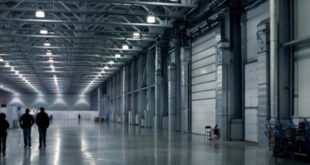Unemployment was down, housing remained affordable compared with other areas and wages were up. The region’s economy is positioned well as it starts into 2019, according to a report.
By virtually every standard, the Inland Empire’e economy performed solidly in 2018.
The region’s population grew, its job gains outperformed both the state and the nation, median home prices went up – while remaining affordable compared with other submarkets in California – and consumer spending went up.
Unemployment also fell to 4.1 percent as the year ended, the lowest rate ever recorded in the two-county region.
Those were the conclusions of a study released earlier this month by the UC Riverside School of Business Center for Economic Forecasting and Development. The report portrays an economy that is outperforming much of the state and shows no sign of slowing, said Robert Kleinhenz, economist and the center’s executive director of research.
“The study says what we’ve been saying for awhile, that the Inland Empire has a strong economy,” said Kleinhenz, one of the document’s authors. “It says the Inland Empire is a good investment and that it’s in a good position heading into 2019.”
The overall impression is of a region that should attract a lot of people, especially first-time homebuyers, for the next few years at least.
“The Inland Empire has grown at a faster pace than other areas in Southern California because it enjoys both a lower cost of living and proximity to major job markets,” Kleinhenz said in an introduction to the eight-page analysis “The wage gains we’ve been seeing are slow moving, but should continue as the job market tightens further and worker scarcity intensifies across the nation.”
The downside is that employers in Riverside and San Bernardino counties often have to compete with employers in other parts of Southern California when they’re hiring workers, and that won’t change anytime soon.
For now, that condition isn’t keeping the Inland region from adding jobs. Between October 2017 and October 2018 [the most recent year-over-year data available] the Inland Empire’s labor force added about 39,000 non-agricultural jobs, an expansion of 2.7 percent.
In the same period, California’s non-farming labor market expanded by 1.8 percent, while the national economy expanded by 1.7 percent.
Overall, Riverside and San Bernardino counties accounted for 25 percent of the increase in the state’s labor force during that 10-month period, the report stated.
Job creation, especially as it relates to other markets, is one of the report’s highlights, Kleinhenz said.
“There was a lull in job creation in the Inland Empire for awhile but fortunately that turned around, with construction and government jobs leading the way,” Kleinhenz said. “That puts the region in a good position.”
Other findings in the report, broken down by category:
WAGES:
Earnings in the Inland region increased in 2018, but at a modest rate: 2.8 percent between the first half of 2017 and the first half of last year. Wages grew three percent in Riverside County and 2.6 percent in San Bernardino County. This was one category where the state outperformed the Inland Empire, as wages grew 4.5 percent statewide.
Not enough workers, coupled with an increase in inflation that is expected to top two percent, should continue to drive wages up, the study predicts.
BUSINESS ACTIVITY:
Taxable sales increased by 6.3 percent in the Inland region between the first three quarters of 2017 and the first three quarters of 2018, spurred mostly by the region’s job gains and an increase in construction spending.
Consumer and business spending rose 6.3 year-over-year during the first nine months of 2018. Business-to-business spending grew by 3.6 percent between the third quarter of 2017 and the third quarter of 2018, according to the study.
HOUSING:
The median price of a single-family home in the Inland Empire hit $355,900 during the third quarter, a seven percent increase from one year earlier. Year-over-year price gains topped Los Angeles and Orange counties as well as the state.
Despite the increase, Inland home prices have yet to return to their pre-recession levels, and the region continues to be one of the most affordable submarkets in California. That is not expected to change in 2019, although some Inland residents continue to rent because they can’t afford a home.
COMMERCIAL REAL ESTATE:
The Inland Empire remained one of the top logistics markets in the United States in 2018, but demand for office and retail space was also on the rise last year. Office vacancy fell to 16.8 percent during the third quarter, essentially unchanged from 2018, but rents for Class A space averaged $22.79 a square foot, a 2.1 percent increase.
Consumer spending continues to pump up demand for retail space. The retail vacancy rate at the end of the third quarter was 9.4 percent, its lowest point since before the recession. More than 300,000 square feet of retail space opened in the Inland Empire last year, and the average asking rate for retail space – nearly $23 per square foot – was a 1.7 percent year-over-year increase.
At least one local economist agrees with the center’s positive assessment of the Inland economy.
Jay Prag, economics professor at the Drucker School of Management at Claremont Graduate University, said he recently put together a slide presentation for the San Bernardino County Economic Development Agency that reached the same conclusion.
“This is a very strong economy and that won’t change unless a major recession hits,” Prag said. “And I don’t see that happening.”
 IE Business Daily Business news for the Inland Empire.
IE Business Daily Business news for the Inland Empire.


